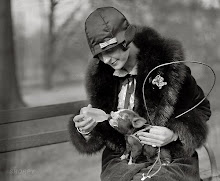Parlari is the official spoken language of the Circus. It is derived from the Gypsy language, Romani, and has grown to be utilized among circuses all over the world.
Originally a trade language of sailors, it was adopted and primarily used within the British Circus, becoming the essential unifying method of communication for performers and crew alike- many of whom stem from diverse territories and across many nations.
Although it's mainstream usage is fairly obsolete, it can still be overheard within modern day circus tents, open air carnivals and sideshows of today. Below is my first installment of colloquialisms within the lexicon.
Brodie: Coined for the famous "bridge jumper" Steve Brodie, (who distinguished himself by purportedly surviving a 14 story fall from the East River Bridge in 1886), the term is defined as an accidental plunge, marked with an element of rashness or folly, and lacking in tragic consequence.
This famous "Brodie" (below) is courtesy of The Althoff Circus- July, 1950. Intended as a promotional stunt, the group loaded their 3 year old elephant on the Wuppertal Schwebebahn (a floating tram) to make the trip into the city. The elephant- apparently not a fan of suspended mass transit- broke through the glass doors and plummeted 39 feet into the Wupper river below. Having survived the fall with only minor injuries, she earned the moniker "Tuffie" which is Italian for "one who dives"
Friday, October 19, 2012
Monday, October 15, 2012
Reanimating Dreamland
For those that know me well, you'll recall that I am an avid fan of pre-Disney animation. The Google doodle for today pays homage to one of my absolute favorites, Winsor McCay.
A friend to sideshow, Winsor began his animation career hosting "chalk-talks" and drawing caricatures of patrons at Sackett & Wiggins' Wonderland, a small dime museum just outside of Detroit. After moving to Cincinnati in 1891, he continued his support of the weird and wonderful, designing posters for traveling freak shows and circuses in the US.
Mere months before the Dreamland fire in 1911, McCay had captured a panoramic view of Coney Island, the scenery of which is heavily featured in Little Nemo.
While Émile Cohl's "Fantasmagorie" predates Winsor's animation attempt below by several years, McCay's technique and attention to detail remains beyond comparison, even today.
A friend to sideshow, Winsor began his animation career hosting "chalk-talks" and drawing caricatures of patrons at Sackett & Wiggins' Wonderland, a small dime museum just outside of Detroit. After moving to Cincinnati in 1891, he continued his support of the weird and wonderful, designing posters for traveling freak shows and circuses in the US.
Mere months before the Dreamland fire in 1911, McCay had captured a panoramic view of Coney Island, the scenery of which is heavily featured in Little Nemo.
While Émile Cohl's "Fantasmagorie" predates Winsor's animation attempt below by several years, McCay's technique and attention to detail remains beyond comparison, even today.
Subscribe to:
Posts (Atom)

